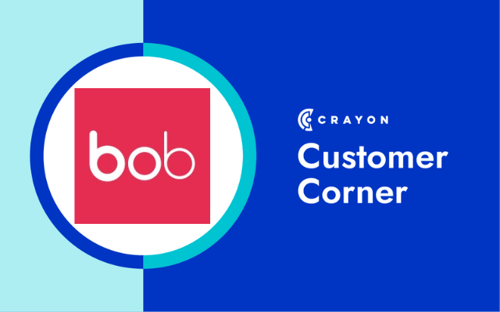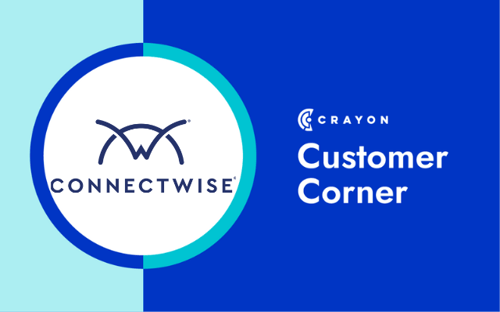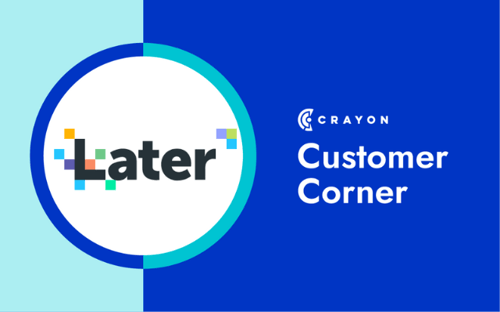A couple weeks ago, when we sat down with Andy McCotter-Bicknell and Fouad Benyoub—leaders of competitive intelligence programs at ClickUp and Everbridge, respectively—we were expecting to talk about key performance indicators (KPIs).
Which we did! Quite a bit, actually. But in a pleasant turn of events, we ended up covering so much more—from the definition of an intelligence-driven organization to the value of CI ambassadors.
To give you a sense of the creativity and expertise that these two guys bring to the table, I’ve compiled in this blog post four of my favorite takeaways from our conversation:
- You’re not a content factory
- To measure success, you need to define your purpose
- Competitive win rate, on its own, is not enough
- You shouldn’t need to use gift cards as incentives
If I’ve done my job, by the time you’re done reading this brief recap, you’ll be unable to resist the full on-demand recording of the webinar. On that note, let’s get started!
1. You’re not a content factory
At many companies, there’s a misconception that the CI team is supposed to be some kind of shadowy, independent organization—a handful of mysterious people who find information through questionable means and pump out content like a mid-2000s blog.
Fouad begs to differ: “Competitive intelligence is collaborative. It’s not about the CI team; it’s about the organization making the most of the intelligence that each person has … The CI team is not a factory shipping output every day—you should be helping shape the organization’s decisions, and you need the help of the field to do that.”
Here’s what this means for you: Set clear expectations with your stakeholders from the get-go. I can’t help you unless you help me. Without a steady stream of field intelligence and constructive feedback, you’ll fail to deliver value over the long term.
2. To measure success, you need to define your purpose
There are certain teams that essentially do the same thing at every company. Take demand gen, for example. Systems and tactics will vary from one company to the next, but generally speaking, every demand gen team exists for the same reason: to help sellers generate pipeline. As a result, many of them measure success using the same KPIs.
The opposite is true of competitive intelligence. Across companies, CI teams exist for a variety of reasons: some support product launches, others inform M&A, others enable sales—the list goes on. This is precisely why there’s no conventional wisdom when it comes to measuring the success of CI.
Fouad’s advice? Define your purpose. This goes back to our previous point on level-setting with your stakeholders. Talk to them: Why do we need a CI team?
Answering this question is the first step towards measuring success: “I call it the 3 Ps: purpose, priorities, productivity. We all need to align at these three levels, so that when we do set our metrics, everyone understands where they came from."
3. Competitive win rate, on its own, is not enough
If you polled 100 product marketers and asked each of them to give you an example of a competitive intelligence KPI, probably half of them would mention competitive win rate. In many of our minds, it’s the default—and it’s not hard to see why! It’s quantitative, which everyone loves, and it appears to connect CI to revenue with a nice, straight line.
Andy is skeptical. He’s not convinced that an increase in competitive win rate, on its own, proves that your battlecards are working—which is why he recommends supplementing this KPI with two others: sales confidence and CI content adoption.
Our competitive win rate is on the rise? Well, that could be anything. Oh—sales confidence and CI content adoption are also on the rise? What we’re doing must be working!
4. You shouldn’t need to use gift cards as incentives
To track your sellers’ confidence, you need to survey them—which raises a question: How do you incentivize people to complete your survey?
Once again, there is a default position—”Give them gift cards!”—and once again, Andy is skeptical. To understand why, recall what we said earlier: From the inception of your CI program, you need to make it clear to your stakeholders that yours is a mutually beneficial relationship. I help you so you can help me, and you help me so I can help you.
The sales confidence survey is a perfect example. Technically, when your sellers complete the survey, they are doing you a favor—which is why it seems natural to compensate them with gift cards.
But completing the survey is in their own best interest. If you have to give them gift cards, then there is a misunderstanding of your relationship that needs to be addressed immediately.
Get more insights—and templates!—from Andy and Fouad
This blog post only scratches the surface of our conversation with Andy and Fouad. To get all their thoughts on what it takes to drive measurable results with competitive intelligence—plus their templates for stakeholder surveys—check out the on-demand recording of the session.

Related Blog Posts
Popular Posts
-
 The 8 Free Market Research Tools and Resources You Need to Know
The 8 Free Market Research Tools and Resources You Need to Know
-
 How to Measure Product Launch Success: 12 KPIs You Should Be Tracking
How to Measure Product Launch Success: 12 KPIs You Should Be Tracking
-
 24 Questions to Consider for Your Next SWOT Analysis
24 Questions to Consider for Your Next SWOT Analysis
-
 How to Create a Competitive Matrix (Step-by-Step Guide With Examples + Free Templates)
How to Create a Competitive Matrix (Step-by-Step Guide With Examples + Free Templates)
-
 6 Competitive Advantage Examples From the Real World
6 Competitive Advantage Examples From the Real World




